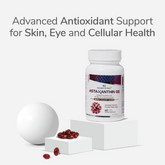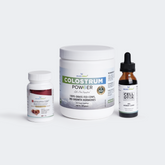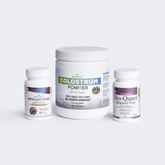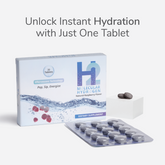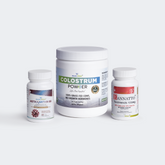Estimated Reading Time: 9 minutes
|Did you know that incorporating foods high in fiber and protein into your diet can have a profound impact on your overall health and well-being? Not only do these nutrient-rich foods provide essential building blocks for your body, but they also play a crucial role in maintaining a balanced diet.
Fiber and protein are two essential nutrients that are often overlooked but are integral to your health. Fiber aids in digestion, helps maintain a healthy weight, and reduces the risk of chronic diseases. Protein, on the other hand, is essential for muscle growth and repair. It also supports the immune system and helps you feel fuller for longer.
In this blog, we will explore the best foods high in fiber and protein, providing you with the knowledge you need to make informed choices about your diet. From mouth-watering fruits and vegetables to delicious whole grains and lean meats, we have curated a list of the top sources of fiber and protein that should be a part of your daily meals.
Key Takeaways:
- Including foods high in fiber and protein in your diet can have significant health benefits.
- Fiber aids in digestion and weight management, while protein supports muscle growth and repair.
- Choose from a variety of food sources such as fruits, vegetables, whole grains, legumes, and lean meats to get your daily dose of fiber and protein.
- Incorporating high-fiber, high-protein foods into your meals can help you feel fuller for longer and reduce the risk of chronic diseases.
- Eating a balanced diet that includes a mix of healthy carbohydrates, protein, and fats is key to maintaining overall health and wellness.
What are the Benefits of a High-Fiber, High-Protein Diet?
Consuming a high-fiber, high-protein diet offers a multitude of benefits for your overall health and wellness. These two essential nutrients play crucial roles in maintaining a well-functioning body and should be incorporated into your daily meals. Let's explore the advantages of incorporating top foods high in fiber and protein:
1. Improved Digestion
Both fiber and protein are beneficial for digestion. Fiber acts as a natural cleanser for your digestive system, promoting regular bowel movements and preventing constipation. On the other hand, protein supports the production of digestive enzymes, aiding in the breakdown and absorption of nutrients.
2. Satiety and Weight Management
A high-fiber, high-protein diet helps to keep you feeling full and satisfied for longer periods. Fiber expands in your stomach, creating a sense of fullness. Additionally, protein increases satiety hormones, reducing hunger pangs and cravings. These effects can support weight management goals and prevent overeating.
3. Blood Sugar Control
Fiber and protein work together to help stabilize blood sugar levels. Fiber slows down the absorption of carbohydrates, preventing sudden spikes in blood sugar. Protein also aids in regulating blood glucose levels by slowing down the digestion and absorption of sugars into the bloodstream.
4. Muscle Growth and Repair
Protein is essential for muscle growth and repair. It provides the building blocks (amino acids) necessary for muscle protein synthesis, helping to repair damaged tissues and promote muscle recovery after exercise. Incorporating protein-rich foods into your diet is especially important for active individuals and those seeking to build and maintain muscle mass.
5. Heart Health
Consuming a fiber and protein-rich diet can have positive effects on heart health. Fiber helps to lower cholesterol levels by reducing the absorption of dietary cholesterol in the intestines. Additionally, protein sources such as lean meats and poultry are low in saturated fats, which can contribute to a healthier heart.
By incorporating high fiber and protein foods into your diet, you can enjoy these benefits while enhancing your overall health and wellness. Let's explore the best sources of fiber and protein in the next section.

Top Sources of High-Fiber High-Protein Foods
When it comes to incorporating high-fiber, high-protein foods into your diet, there are numerous options to choose from. By including a variety of these nutrient-rich foods in your meals, you can ensure that you're meeting your daily fiber and protein needs. Below is a comprehensive list of top sources of fiber and protein, along with their respective nutrient content:
Fiber-Rich Foods:
- Legumes (such as lentils, chickpeas, and black beans): These plant-based proteins are not only rich in fiber but also provide a good amount of protein.
- Whole grains (like quinoa, brown rice, and oats): These grains are packed with fiber, providing a hearty and nutritious addition to your meals.
- Nuts and seeds (such as almonds, chia seeds, and flaxseeds): These crunchy delights offer a good dose of fiber, healthy fats, and protein.
- Fruits (such as apples, berries, and pears): Besides being rich in vitamins and antioxidants, fruits are a great source of dietary fiber.
- Vegetables (like broccoli, Brussels sprouts, and spinach): These nutrient-packed veggies provide both fiber and an array of essential vitamins and minerals.
Protein-Packed Foods:
- Lean meats (such as chicken breast, turkey, and lean cuts of beef): These animal-based proteins offer a high-quality protein source with minimal fat content.
- Fish and seafood (like salmon, tuna, and shrimp): These ocean treasures provide an excellent source of lean protein, along with heart-healthy omega-3 fatty acids.
- Dairy products (such as Greek yogurt, cottage cheese, and milk): These calcium-rich foods are also packed with protein, making them a nutritious option.
- Eggs: With a complete amino acid profile, eggs are a versatile and protein-rich ingredient that can be enjoyed in various dishes.
- Soy products (like tofu and tempeh): These plant-based proteins are not only rich in fiber but also offer all the essential amino acids required by the body.
By including a combination of these high-fiber, high-protein foods in your diet, you can enjoy a wide range of flavors while reaping the numerous health benefits they provide. Experiment with different recipes and incorporate these foods into your meals to create a well-rounded and nutritious eating plan.
Incorporating Fiber and Protein Into Your Meals
Incorporating fiber and protein-rich foods into your meals is an excellent way to promote a healthy and balanced diet. By making simple and informed choices, you can easily increase your intake of these essential nutrients.
Create Balanced Meals
When planning your meals, aim to include a variety of food groups that provide both fiber and protein. Incorporate fruits, vegetables, whole grains, lean meats, legumes, and nuts into your daily menu. This ensures you're getting a good mix of nutrients and flavors.
Choose Nutrient-Dense Options
Instead of processed foods that are often high in added sugars and unhealthy fats, opt for whole, nutrient-dense alternatives. Replace sugary cereals with steel-cut oats and sweetened drinks with herbal teas or infused water. These swaps provide your body with healthier sources of fiber and protein.
Try New Recipes
Experiment with different recipes that feature fiber and protein-rich ingredients. Incorporate ingredients like quinoa, chia seeds, beans, and grilled chicken into your dishes. There are countless online resources, cookbooks, and apps available to inspire your culinary adventures and help you discover new flavors.
Snack Smart
When hunger strikes between meals, reach for snacks that are high in fiber and protein. Consider options like Greek yogurt with berries, carrot sticks with hummus, or a handful of almonds. These snacks will not only satisfy your cravings but also provide beneficial nutrients to keep you energized.
By following these practical tips, you can easily incorporate foods high in fiber and protein into your meals and reap the numerous benefits they offer. So go ahead, explore new tastes, nourish your body, and enjoy delicious and nutritious meals every day!
Conclusion
In conclusion, incorporating foods high in fiber and protein into your diet is crucial for maintaining overall health and wellness. These foods high in fiber and protein not only provide essential vitamins and minerals, but also offer numerous benefits for digestion, satiety, and muscle growth. By prioritizing a balanced diet that includes a variety of high-fiber, high-protein foods, you can optimize your nutrition and improve your overall well-being.
Fiber is essential for maintaining a healthy digestive system and preventing constipation. It adds bulk to your stool, promoting regular bowel movements and preventing uncomfortable digestive issues. Additionally, fiber-rich foods help you feel fuller for longer periods, reducing overeating and aiding in weight management.
Protein is a vital macronutrient that plays a fundamental role in repairing and building tissues, including muscles, bones, and skin. It is also important for hormone regulation and maintaining a strong immune system. By consuming high-quality protein sources such as lean meats, fish, eggs, and plant-based options like beans and tofu, you can support muscle growth and repair.
Start incorporating foods high in fiber and protein into your meals today to experience a positive impact on your health. Remember to consult with a healthcare professional or a registered dietitian for personalized guidance and recommendations tailored to your specific dietary needs and goals for healthy fiber and protein foods.
FAQs
What are some foods high in fiber and protein?
Foods high in both fiber and protein include legumes such as beans, lentils, and chickpeas, nuts and seeds like almonds, chia seeds, and flaxseeds, whole grains such as quinoa and oats, and lean meats like chicken and turkey.
Why is a high-fiber, high-protein diet beneficial?
Consuming a high-fiber, high-protein diet offers numerous benefits. Fiber aids in digestion helps maintain bowel regularity, and promotes a feeling of fullness, while protein supports muscle growth and repair. This combination can help stabilize blood sugar levels, support weight management, and contribute to overall health and wellness.
What are some other sources of fiber and protein?
Besides legumes, nuts and seeds, whole grains, and lean meats, other sources of fiber and protein include tofu, tempeh, Greek yogurt, cottage cheese, and eggs. Additionally, fruits and vegetables such as raspberries, broccoli, and avocados provide both fiber and protein.
How can I incorporate fiber and protein into my meals?
To incorporate top fiber and protein foods into your meals, focus on creating balanced meals that include a variety of nutrient-dense options. Opt for whole foods rather than processed foods, choose high-fiber grains like brown rice and whole wheat bread, add nuts and seeds to salads and snacks, and include lean sources of protein in your meals such as grilled chicken or fish.
What are the benefits of including fiber and protein in my diet?
Including fiber and protein in your diet offers numerous benefits. Fiber aids in digestion helps prevent constipation, and promotes a feeling of fullness. Protein supports muscle growth and repair, helps maintain a healthy weight, and contributes to overall bodily functions. Both fiber and protein content in foods are essential for optimal health and wellness.
Are there any vegetarian or vegan sources of fiber and protein?
Yes, there are plenty of vegetarian and vegan sources of fiber and protein. Some examples include soy products like tofu and tempeh, legumes such as lentils and black beans, quinoa, chia seeds, hemp seeds, and plant-based protein sources like seitan and edamame.
How much fiber and protein should I aim to consume each day?
The recommended daily intake of fiber is around 25 to 38 grams for adults, while the recommended daily intake of protein varies based on factors like age, sex, and activity level. It is generally recommended to consume 0.8 grams of protein per kilogram of body weight. However, consulting with a healthcare professional or registered dietitian can provide personalized recommendations based on your specific needs.
Disclaimer: These statements have not been assessed by the FDA. The information contained within this page is for educational purposes only. It is not intended to replace the advice or attention of health care professionals.

















